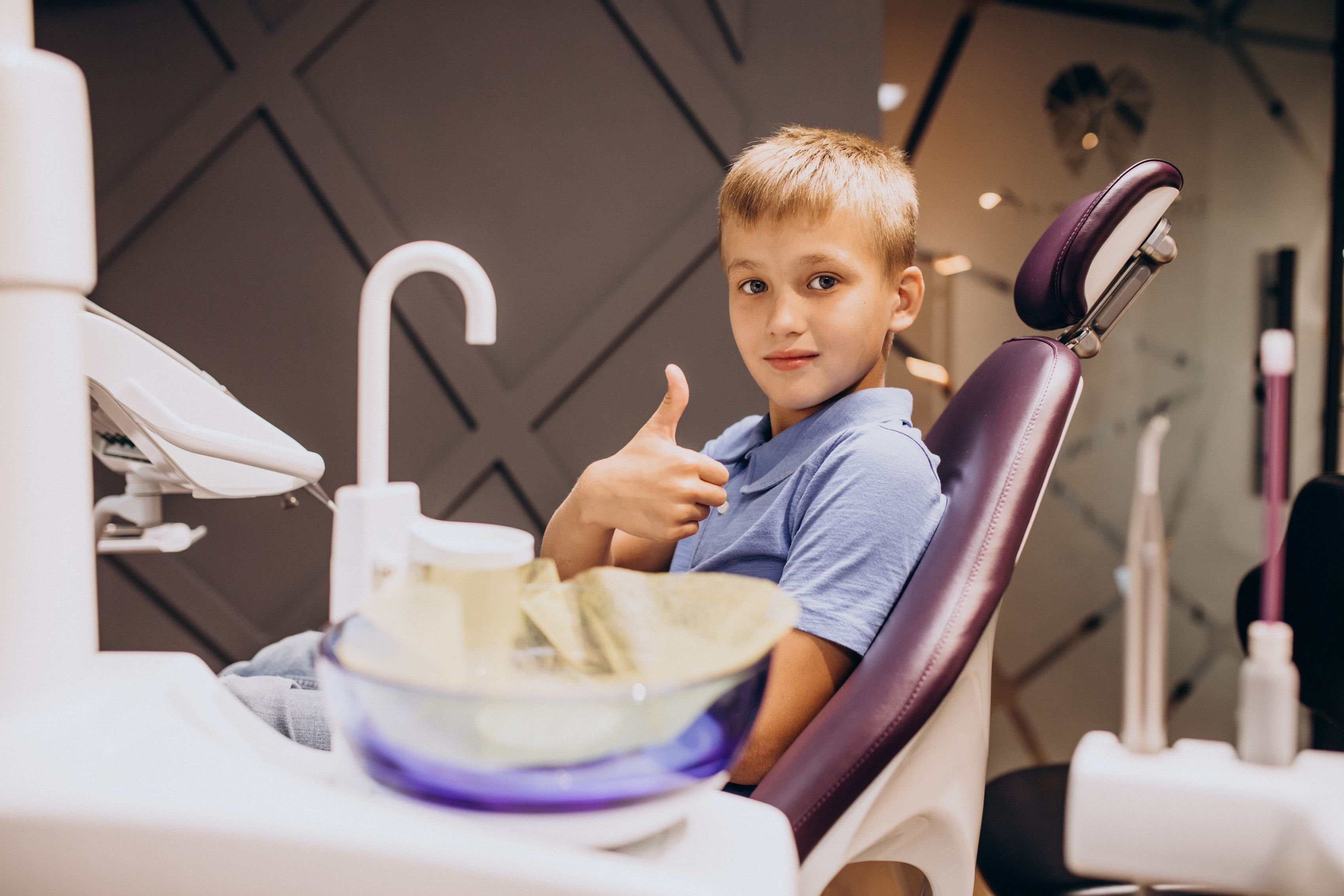July 14, 2025
How to Make Dental Visits Less Stressful for Kids

Key Takeaways
- Children with positive early dental experiences are 87% more likely to maintain regular dental care as adults
- Pre-visit preparation can reduce dental anxiety in children by up to 40%
- Child-friendly office environments decrease behavioral issues during appointments by 35%
- Communication techniques adapted for children improve cooperation rates by 50%
- Parental involvement strategies significantly impact children's dental anxiety levels
- Technology and distraction methods reduce perceived pain and anxiety by 30%
- Positive reinforcement systems increase treatment acceptance in pediatric patients
- Staff training in pediatric psychology improves patient outcomes and parent satisfaction
- Early intervention for dental anxiety prevents long-term dental phobias
Understanding Pediatric Dental Anxiety
Dental anxiety affects up to 20% of children, creating challenges that extend far beyond the dental chair. At Silver State Smiles, we recognize that childhood dental experiences shape lifelong oral health habits. When children associate dental visits with fear and stress, they're more likely to avoid dental care as adults, leading to serious oral health consequences.
Pediatric dental anxiety stems from multiple sources including fear of the unknown, previous negative experiences, parental anxiety transmission, and sensory sensitivities common in young patients. Understanding these root causes helps dental teams develop targeted strategies that address each child's specific concerns.
Research shows that practices implementing comprehensive anxiety-reduction protocols see improved treatment outcomes, higher parent satisfaction, and increased referrals from grateful families.
Creating a Child-Friendly Environment
The Power of First Impressions
The moment children enter your practice, every detail matters. A thoughtfully designed pediatric space immediately signals that this is a place where kids are welcome and understood. Successful practices transform waiting areas from sterile medical spaces into engaging environments that capture children's imagination while calming their nerves.
Key environmental elements include colorful, themed décor that tells a story, child-sized furniture that makes kids feel comfortable, interactive elements like wall games or tablets with educational apps, and separate areas for different age groups. The goal is creating positive associations before children even enter the treatment area.
Sensory Considerations for Comfort
Many children experience heightened sensory sensitivity in medical environments. Addressing these sensitivities through environmental modifications significantly reduces anxiety.
Consider softer, adjustable lighting instead of harsh fluorescents, background music or nature sounds to mask equipment noise, pleasant scents through aromatherapy diffusers, and comfortable temperature control. These seemingly small details create cumulative comfort that helps children relax throughout their visit.
Pre-Visit Preparation Strategies
Digital Tools for Familiarization
Modern technology offers powerful tools for reducing dental anxiety before children arrive. Interactive websites with games teaching dental health concepts make learning fun while building positive associations.
Video introductions of dental team members help children recognize friendly faces upon arrival. Social stories - visual narratives showing step-by-step visit processes - particularly benefit children with autism or anxiety disorders. These digital preparation tools reduce fear of the unknown by up to 40%.
Parent Education and Involvement
Parents play a crucial role in shaping children's dental attitudes. Effective practices provide comprehensive parent education covering age-appropriate explanations of procedures, positive language to use when discussing dental visits, and strategies for managing their own dental anxieties. When parents understand how their behaviors influence their children's experiences, they become powerful allies in creating positive visits.
Pre-visit phone calls allow staff to gather information about children's specific fears, preferences, and behavioral tendencies. This preparation enables personalized approaches that address individual needs from the moment families arrive.
Communication Techniques That Work
Age-Appropriate Language and Explanations
Effective communication with pediatric patients requires adapting language and explanations to developmental levels:
• Ages 2-4: Simple, concrete terms with minimal detail ("counting teeth" instead of "examination") • Ages 5-7: Basic explanations with positive framing ("tooth shower" for cleaning) • Ages 8-11: More detailed information with child involvement in decisions • Ages 12+: Respectful, direct communication acknowledging growing autonomy
The tell-show-do technique remains gold standard for pediatric dentistry. First explaining procedures in child-friendly terms, then demonstrating on models or fingers, before performing actual treatment builds trust and reduces anxiety through predictability.
Non-Verbal Communication and Body Language
Children are exceptionally attuned to non-verbal cues. Dental teams must maintain calm, confident body language even during challenging behaviors. Getting down to children's eye level, maintaining relaxed facial expressions, using gentle touch for reassurance, and moving slowly and predictably all communicate safety and care beyond words.
Behavioral Management Techniques
Positive Reinforcement Systems
Effective behavior management focuses on encouraging cooperation rather than punishing resistance. Silver State Smiles implements reward systems including sticker charts tracking visit progress, treasure boxes with age-appropriate prizes, digital badges for brave behavior, and "Cavity-Free Club" recognition programs. These positive reinforcements create anticipation for dental visits rather than dread.
Immediate praise for small victories - sitting in the chair, opening wide, or staying still - builds confidence throughout appointments. Children learn that cooperation leads to positive outcomes, establishing patterns that facilitate future visits.
Distraction and Coping Strategies
Modern distraction techniques significantly reduce perceived discomfort during procedures. Ceiling-mounted TVs playing favorite shows, virtual reality headsets for immersive experiences, guided breathing exercises with visual aids, and interactive storytelling where children help create narratives all shift focus from dental procedures to engaging activities.
Teaching coping skills empowers children to manage their own anxiety. Simple techniques like balloon breathing, progressive muscle relaxation adapted for kids, and visualization of favorite places give children tools they can use during procedures and in other stressful situations.
Technology and Innovation in Pediatric Dentistry
Digital Tools That Reduce Anxiety
Technological advances offer new ways to minimize dental stress. Laser dentistry reduces drill noise and vibration that often trigger anxiety. Digital impressions eliminate uncomfortable traditional molds. Intraoral cameras let children see "tooth pictures," demystifying procedures while engaging their curiosity.
Computer-assisted anesthesia delivery systems provide more comfortable numbing experiences. These devices control flow rates precisely, reducing injection discomfort that often creates lasting dental fears. When children experience less pain, they develop more positive associations with dental care.
Gamification of Dental Health
Transforming oral health into interactive games motivates children while reducing anxiety. Apps that track brushing habits with fun characters, augmented reality experiences showing "sugar bugs" being defeated, and in-office video games controlled by opening mouths properly all make dental concepts engaging rather than frightening. Gamification helps children feel like active participants rather than passive patients.
Training Your Team for Pediatric Success
Essential Skills for Working with Children
Successful pediatric dental teams possess specific skills beyond clinical expertise. Essential competencies include recognizing anxiety signs before escalation, adapting communication styles quickly, maintaining patience during challenging behaviors, and coordinating seamlessly with parents. Regular training in child development and behavioral psychology ensures all team members can contribute to positive experiences.
Role-playing exercises help staff practice handling common scenarios like extreme fear, refusal to cooperate, or parent anxiety. When teams respond consistently and confidently to challenges, children feel secure even during difficult moments.
Creating Consistent Protocols
Standardized protocols ensure every child receives optimal anxiety-reduction support regardless of which team members are present. Protocols should address pre-visit communication procedures, greeting and rapport-building sequences, step-by-step behavioral guidance techniques, and escalation procedures for extreme anxiety. Consistency across visits builds familiarity that reduces anxiety over time.
Special Considerations for Different Age Groups
Infants and Toddlers (0-3 years)
Early experiences set foundations for lifetime dental attitudes. For youngest patients, lap-to-lap examinations with parent involvement, extremely brief procedures focusing on positivity, singing and simple games for distraction, and parent education emphasizing prevention create positive associations before memories fully form.
School-Age Children (6-11 years)
This age group benefits from increased involvement and control. Offering choices ("Which tooth should we count first?"), explaining the "why" behind procedures, using their interests for analogies and rewards, and acknowledging their bravery and maturity helps them feel respected and capable.
Adolescents (12+ years)
Teen patients require different approaches acknowledging their developing autonomy. Direct, honest communication about procedures, privacy options regarding parent presence, discussion of aesthetic concerns respectfully, and flexible scheduling accommodating their preferences shows respect for their emerging independence while maintaining necessary care.
Measuring Success and Continuous Improvement
Tracking Anxiety Reduction Outcomes
Silver State Smiles monitors multiple metrics to ensure anxiety-reduction strategies succeed:
- Pre and post-visit anxiety assessments using child-friendly scales
- Behavioral cooperation ratings during procedures
- Parent satisfaction surveys specifically addressing anxiety management
- Return visit compliance rates for anxious patients
- Referral patterns from families with previously anxious children
Regular analysis identifies which techniques work best for different age groups and anxiety types, enabling continuous protocol refinement.
Building Long-Term Relationships
Success extends beyond single visits to building relationships where children genuinely look forward to dental appointments. This requires remembering personal details and interests, celebrating milestones like lost teeth or birthdays, maintaining consistent team members when possible, and creating traditions unique to your practice. When children feel known and valued, dental visits become positive experiences rather than ordeals to endure.
The Business Case for Anxiety Reduction
Practice Growth Through Positive Experiences
Investing in pediatric anxiety reduction yields significant business benefits. Families with anxious children often struggle finding suitable dental homes, making practices known for gentle approaches highly sought after. Word-of-mouth referrals from grateful parents whose children now enjoy dental visits create powerful practice growth.
Reduced anxiety also improves operational efficiency through shorter appointment times due to increased cooperation, decreased need for sedation or restraints, fewer cancelled appointments from anxious families, and improved case acceptance when children aren't fearful. These efficiencies allow practices to serve more patients while maintaining quality care.
Staff Satisfaction and Retention
Working with anxious children challenges even experienced professionals. Comprehensive anxiety-reduction programs improve staff experiences by reducing stressful patient interactions, increasing successful treatment completions, creating more positive work environments, and building confidence in handling difficult situations. When staff feel equipped to help anxious children successfully, job satisfaction increases significantly.
Conclusion
Creating stress-free dental experiences for children requires comprehensive approaches addressing environment, communication, technology, and team training. At Silver State Smiles, we've seen firsthand how implementing these strategies transforms fearful children into confident patients who maintain excellent oral health throughout their lives.
The investment in pediatric anxiety reduction pays dividends through improved clinical outcomes, practice growth, and the satisfaction of knowing we're creating positive associations that last lifetimes. By continuing to innovate and refine our approaches based on each child's unique needs, we can ensure that dental visits become experiences children anticipate rather than fear.
Every child deserves anxiety-free dental care. Through dedication to understanding and addressing pediatric dental anxiety, practices can make this goal a reality, one smile at a time.

Schedule Your Visit Today
Experience exceptional dental care in a comfortable, state-of-the-art environment. New patients welcome!
